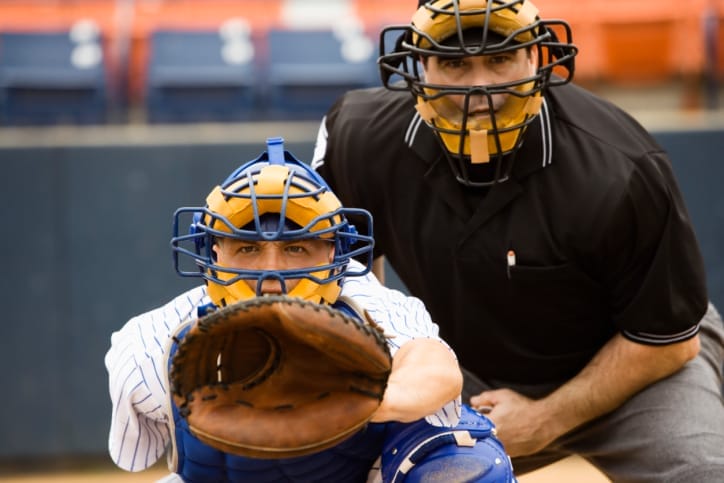With the 2013 Major League Baseball season just underway, here’s a simple idea with a strategic payoff: Minimize the subjectivity of calls behind home plate.
In any sport, few conditions are more annoying than officialitis—a syndrome in which the referees, judges, umpires, et al. put themselves front and center. They disrupt the flow and turn off fans as much as players. But baseball, a slow-paced, discontinuous game, has an even bigger such problem: the umpire behind home plate.
The essence of baseball is pitcher versus batter—a primal, one-on-one confrontation that determines most of a game’s outcome. Yet in this age of hi-def TV, strike zones seem to have become increasingly inaccurate and inconsistent; hence, pitcher and batter must compete not only against each other but also against an imaginary space almost impossible for either to define.
A longstanding joke about balls-and-strikes umps goes as follows:
Umpire #1: “I call ’em as they are.”
Umpire #2: “I call ’em as I see ’em.”
Umpire #3: “They ain’t nothin’ ’til I call ’em.”
Major League Baseball has too many #2s and especially #3s.
Two changes can help. First, make the strike zone the same for every hitter, irrespective of his height and stance. The late owner Bill Veeck once demonstrated the absurdity of disparate strike zones by hiring 3’7” Eddie Gaedel to step into the batter’s box as a pinch hitter in an actual game. Eddie walked on four pitches. There is no other sport in which a ruling, much less such a crucial one, is influenced by a player’s dimensions.
Second, automate the determination of balls and strikes—hardly a daunting technical task. Granted, one of the joys of baseball is its pastoral nature, and in general no more technology should be injected into the process of a sport than is absolutely necessary. But balls-and-strikes umpiring often borders on random. One can watch the last inning or two of a close game and very nearly predict which team will prevail based on pitchers’ and batters’ emotional reactions and subsequent adjustments to flawed calls.
Sure, keep an umpire behind the plate to resolve ambiguity: dropped balls, hit batsmen, whether a bunt stays fair or goes foul, and so on—in addition, to making the judgment when a runner tries to score under a defender’s tag.
But if we can remove the frailty of human decision-making under time pressure from the better part of the game, then players, fans and even baseball itself will win.

























